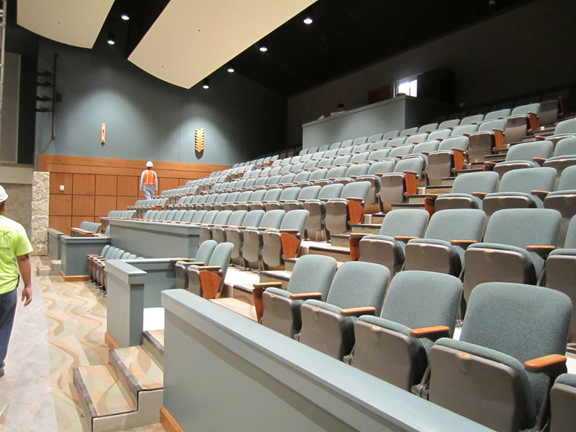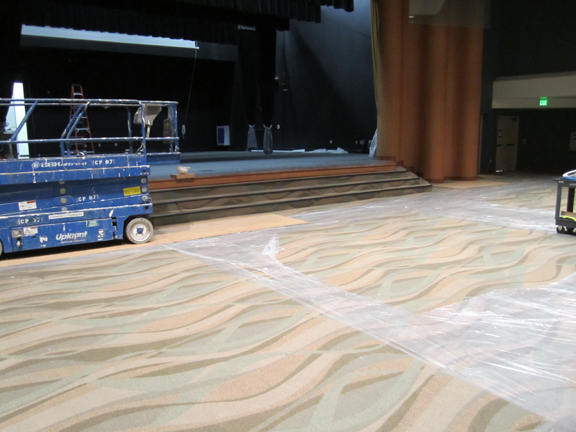Last week in response to my call for suggestions of topics to discuss, commenter Samara asked,
“I am attending Bellarmine University this fall as a freshman and am the only student as an Arts Administration Undergrad with music being my emphasis. What should I expect in my Arts Admin classes? Besides the fact that I’ll be alone and don’t get a studio until spring semester haha!”
I took a look at the Bellarmine Arts Admin program and the course requirements for the music focus and generated the following response for Samara.
[hr]
Samara-
In terms of exactly what sort of experience to expect, I obviously can’t tell you because every arts administration program is different, even from year to year.
What I can tell you is what to expect from yourself and what expect from your instructors, internship supervisors and other colleagues.
I apologize right from the start there is probably going to be a tinge of condescension in some of what I have to say. It can’t be helped when you are trying to offer general advice to someone you don’t really know.
The first thing to be aware of that you are being taught the skills you will need to be a successful arts administrator, but you are not being taught how to be a successful arts administrator.
Ken Robinson said it best a few years ago when he talked about how schools creativity. He notes that we never know now what students will need to know decades down the road so the best thing we can do for students today is teach them to be creative, think critically and teach themselves new skills.
Twenty some odd years ago when you were born the world was just being introduced to dial up internet, and 14.4k at that. I remember a guy in 1994 telling me I should use the Macs in a different computer lab because they had this new thing called a web browser which let you see the internet with colors.
No one really had cellphones, cable or wireless modems. We could imagine a time when we would have cellphones, faster internet connections and maybe something like iPods, but social media, texting, Kickstarter campaigns, global warming, American Idol and so many other things that are common today weren’t really on anyone’s radar.
But in the three-four years between 1994 and 1997/1998 we went from web browsers just beginning to appear to everyone expecting that any worthwhile business would have a website and I was learning HTML.
No one really knows what the future will demand of arts administrators even four years down the road so they can’t give you the secret formula for success upon graduation. What they can do is equip you with the skills to discover that formula for whatever company/organization you work for or establish. Every company is different in terms of the goals they have and the customers/constituencies they seek to serve.
What you should expect from your degree program is a lot of opportunities to discuss problems facing the arts and possible solutions. By the time you are ready to graduate, I guarantee there will be entirely new problems to discuss.
You will need to read and talk a lot about challenges, trends and techniques outside of the arts which may be applicable to the arts. You will have to discern which are likely flash in the pan trends that just have good PR behind them but won’t amount to much and which trends have staying power.
You will be a good arts administrator when you graduate if you are practiced at looking at new situations, generating and evaluating possible solutions and then implementing them.
Note that you may not be a successful arts administrator by many measures because you can certainly still make mistakes, especially when trying something new. But if you have the capacity to evolve ideas rather than fall back on old practices, you will be in good shape.
Given that times are changing quickly, I won’t assume you will end up working for an arts organization. You could easily be a manager at an online gaming company.
One of the things I am really pleased to see about your degree program is that there are a lot of interdisciplinary seminars. (Though not surprising since Roberto Bellarmino was a Jesuit and the school had a close association with Thomas Merton.)
My hope is that you will be in those seminars with business, science and liberal arts students so that there are opportunities to exchange multiple views. There can be a lot of dangerous insularity in the fine arts.
I see from the degree requirements you will be participating in classes that engage in discussions and field visits to local arts organizations. You will also have a couple semesters of internships.
Take the opportunity to ask questions and make suggestions realizing, that you are going to make some really dumb suggestions. That is just part of the process of learning. It can be painful, but can’t be avoided.
I only stopped saying dumb things six months ago…..
Some of your suggestions will actually be good but the people in charge are afraid of implementing them. You have to be humble enough to accept being told no because you won’t be experienced enough to really discern what really isn’t viable and what people are afraid to consider.
Always assuming that people are too timid to take chances will just make you miserable. Make a list of your ideas and come back to them later. Throw away the ones that were bad and propose or keep the good ones. Repeat.
Or try implementing your ideas yourself on a smaller scale. The times increasingly offer greater resources that allow people to accomplish thing on their own.
In terms of your internships. Everyone has to make copies and coffee when they are interns. That shouldn’t be the whole of your job though. Talk to people who have interned before to make sure the internship coordinator is ensuring the internships are valuable experiences.
The easiest way to make sure you will have a good internship experience is to know before you go that your internship coordinator actively monitors the environment and is on the look out for your best interests.
Even if you are asked to do a lot of menial work, you can turn it into a learning experience. Interning in the days before email attachments were so easy was both a blessing and a curse. I may have had to run a lot of errands, but many times it was to the lawyers’ office. I knew enough not to talk about it with others, but no one said I shouldn’t read the documents I was couriering while waiting at the red lights…
In terms of useful skills, I would encourage you to pay very close attention in the accounting, finance and law classes. A person who can understand contracts as well as maintain and properly interpret balance sheets and cash flow statements will be valued pretty much anywhere.
The same with the writing classes and communication classes. There are so many channels of communication from email to 140 character texts to image sharing and probably more still on the way. The more that emerge, the more valuable a person who is able to quickly and clearly engage the viewer/reader.
Finally, I would stress the leadership/management and philosophy classes. Effective leadership has more to do with a good understanding of philosophy than with the analytics found in other business courses in my mind.
Ultimately, it is up to you decide what you want to invest and reap from each of your classes. Worry more about what you are getting out of the class than obsessing about your grades. When I was an undergrad, I was content to get a B or C in a class I enjoyed because I felt like I gained something valuable. The grade was only a measure of my progress at the moment, but the interest the class engendered in the subject matter inspired me to continue to learn more about it.
Good luck.






























Thanks for what you are doing to bring cultural change to the arts. It is so important to represent everyone.…